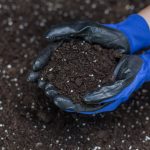 How to Test Soil
How to Test Soil
With agriculture and cultivation, soil quality is a deciding factor in the wellbeing of your plants and the quality of the produce they generate. Plants are only as healthy as the soil they are grown in. If the soil is rich in nutrients and organic material, then you will have healthy fields and a bountiful harvest. If the soil is contaminated with any number of volatile organic compounds, however, then your plants and your health may become compromised.
There is a long list of nutrients and minerals found in soil that do wonders for growth. A few of these healthy nutrients include nitrogen, potassium, and calcium. However, there are equally numerous unhealthy compounds that can be present and are only truly recognizable through soil testing. Some of the more detrimental compounds include mercury, barium, and arsenic. The following are some ways on how to test soil at home for a generalized understanding or to see indicators that will point you towards professional soil testing and remedial measures.
Judging the strength of the bond in your soil is the easiest way on how to test soil, it’s just a matter of knowing what to look for in the results. Simply grab a good handful of moist soil and squeeze it in your palm. When you open your palm, the results will be evident.
If the soil falls apart immediately, your soil is of a sandy nature. That means it will be less likely to hold nutrients. While not necessarily a terrible thing, it could prove an issue in terms of sustaining life. If the soil holds together in a clump, your soil is compound rich. Once again, this is not necessarily a good thing; however, it is an indication that you might want to get to know what those compounds are through professional soil testing.
Also, the worm test is a classic method on how to test soil and judging the life sustainability of that soil. Wait until your soil is nice and wet, then dig out around 1 cubed foot of dirt and spread it along a large piece of cardboard or a plastic bag. Then, sift through it and count how many earthworms you find.
About ten earthworms indicate that your soil contains the nutrients and bacteria that support life. The nutrients will attract earthworms, which in turn will create even more organic material for growing plants and sustaining life. If there are very few worms in your soil sample, it could indicate harmful compounds or soil that is too acidic and unbalanced to sustain life. A professional soil testing should be immediately utilized to remediate this.
The health of your soil is the cornerstone to the health of your plants. Ensure that your soil is compound rich and sustainable through rigorous soil testing. And if your soil is experiencing contamination, take the correct steps to identify the problem before contamination snowballs.


 How to Test Soil
How to Test Soil

